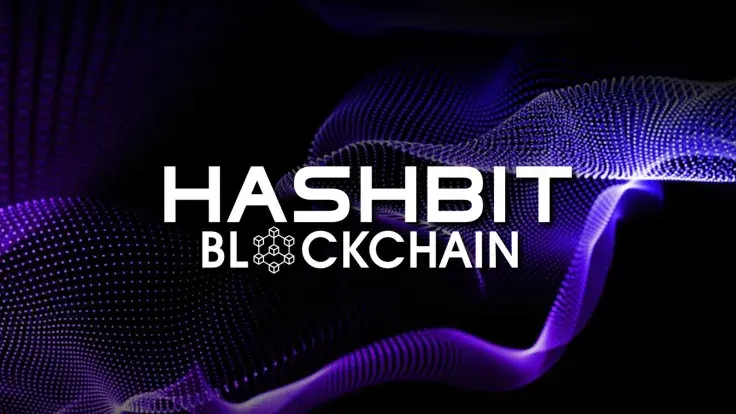
Introduced in 2022 by HashBit developers, HBC20 is a fully EVM-compatible blockchain with smart contracts and a balanced decentralized consensus. It aims at building an all-in-one ecosystem for dApp developers and retail users.
Cutting-edge PoA blockchain with smart contracts: What is HBC20?
Launched amid bearish recession of 2022, the HBC20 proof-of-authority (PoA) blockchain employs three revolutionary narratives of the Web3 segment: a standalone infrastructure, 360° compatibility with the leading programmable blockchain Ethereum (ETH) and an opportunity for seamless cross-blockchain communication.
▶️#HBIT.BEP20 facts:
— HashBit BlockChain (@HashBitorg) December 16, 2022
☑️Total Supply: 50B
☑️Locked: 15.81B (HBIT Java Chain)
☑️Circulating: 34.19B
💎34.19B/50M= under 783 Holders can Receive Rewards on #BEP20 Dividends! too low....
💵Buy now yours and enjoy low Price: https://t.co/Gp0SDNebDx#BSC #BNB #Binance #defi #hodl pic.twitter.com/h824Hy8SRV
The blockchain’s tokenomics is underpinned by HBIT, a BEP-20 token on BNB Smart Chain (BSC). Every HBIT on BSC is mirrored by a token on the native HBC20 chain, which will be released to investors once the token sale has ended. The BSC-based version of the token was activated on Oct. 26, 2022, via a public auction.
To ensure sustainable operations of its ecosystem, HashBit decided to launch HBC20 as a standalone chain: if one of the chains fails, investors will not be affected. Being fully compatible with Ethereum (ETH), HBC20 ensures the possibility of seamless migration to Ethereum-based decentralized applications (dApps).
Cross-chain compatibility is the third pillar of the HBC20 narrative: the blockchain is designed for easy transfer of value and information between various heterogeneous decentralized networks in a non-custodial manner.
Pushing barriers of throughput and scalability
Cutting-edge technical design allowed the HBC20 blockchain to achieve impressive scalability and speed metrics. Namely, its block time does not exceed five seconds. For instance, in Bitcoin (BTC), a block is mined every 10 minutes: its block time is 120x higher than that of HBC20. Ethereum (ETH) processes blocks 2.5x slower than the HBC20 network does.
The HBC20 network has accomplished a 100,000 transactions per second (TPS) throughput. To provide context, Bitcoin (BTC) can only process three transactions per second; for Ethereum (ETH), this metric is limited by 15 TPS. The HBC20 blockchain challenges the supremacy of third-generation blockchains, including Solana (SOL) and Avalanche (AVAX).
As such, the HBC20 network has achieved way more impressive transactional speed than its major competitors in the segment of programmatic blockchains. The platform also operates with ultra-low transactional fees: every transaction is only charged with 0.000021 HBIT. Operations with smart contracts can be charged with slightly higher fees, but, in general, all transactional costs remain negligible on the HBC20 blockchain.
Combined with a fair and inclusive proof-of-authority (PoA) consensus, the HBC20 network is an example of how the “blockchain trilemma” puzzle could be solved without sacrificing speed, decentralization, or security.
Introducing HBC20 ecosystem: Launchpad, NFTs and in-browser wallet
All these features make the HBC20 blockchain the go-to solution for decentralized applications on Ethereum (ETH) and EVM-compatible blockchains of previous generations. However, HBC20 itself is building a multi-product ecosystem of applications and platforms for retail users and entrepreneurs.
HashBitPad is among its key ventures: the platform allows projects to raise funds from purpose-made decentralized liquidity pools. These pools can offer liquidity to early-stage projects in a fully trustless manner, removing the necessity for third-party control. Once the round is over, projects can release tokens to investors without leaving the launchpad.
Then, HBC20 has onboarded a native marketplace for non-fungible tokens (NFTs). Digital art enthusiasts with various levels of expertise in blockchain, crypto trading and the like can launch and release their collections to the general public with no intermediaries involved. This platform unlocks massive opportunities for traders, commissioners and NFT collectors.
For mainstream usage, the HBC20 ecosystem has created an on-chain wallet that can be run through users’ browsers. Not unlike the popular MetaMask plugin, it is designed for non-custodial storage of cryptocurrency funds in HBIT and all existing and upcoming HBC20-based blockchains.
For entrepreneurs, HBC20 has released a no-code instrument for token minting. Everyone can design and mint their tokens on the HBC20 blockchain without writing a single line of code. Last but not least, the HBC20 ecosystem has its own mobile wallet for iOS- and Android-based smartphones. The mobile application by HBC20 is an ideal entry point for no-coiners interested in joining the thriving ecosystem of the HBC20 blockchain and its products.
Besides that, HBC20 has managed to create a passionate and large community of enthusiasts active on Telegram Messenger and on Twitter.
 Dan Burgin
Dan Burgin Vladislav Sopov
Vladislav Sopov U.Today Editorial Team
U.Today Editorial Team